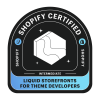The term business-to-consumer (B2C) refers to a model of buying/selling products and services directly between a company and consumers who are end-users. B2C e-commerce is among 4 major e-commerce business models, the various other three being: B2B (business-to-business), C2B (consumer-to-business), as well as C2C (consumer-to-consumer).
What is B2C e-commerce? #
A preferred example of a B2C e-commerce system is Amazon. E-commerce sales take place almost entirely online, in addition to the delivery and distribution procedures, so they offer vendors and buyers the comfort and flexibility to make transactions any time and from any area. This enhanced ease of trading online, compared to conventional sales, has made B2C e-commerce among the fastest growing industries in the international economic situation as well as it’s approximated to produce around 6.3 trillion USD in global sales 2024.
Types of B2C business models #
B2C has 5 types:
#1 Direct sellers #
Direct sellers are the most common type of e-commerce business model. These online stores either sell items from their very own brand name or offer a variety of brand names.
#2 Online intermediaries #
Online intermediaries are arbitrators who use their websites to bring services and potential consumers. Intermediaries do not possess any product, service, or brand. Their only job is to form a course between those that offer and those that get.
#3 Advertisement-based #
Advertisement-based e-commerce websites additionally do not own any services or products. Instead, they sell promotions for services and products that businesses own. In time, as these websites grow more preferred, they start to be described as major internet sites that promote various other businesses.
#4 Community-based #
In the community-based e-commerce model, organizations target online discussion forums that relate to the products and services they offer and also market their products there. For instance, Facebook hosts teams and areas related to certain interests, so businesses can locate a suitable one to pitch what they supply.
#5 Fee-based #
Fee-based B2C provides access to exclusive content for a certain fee. These include subscription services, and an excellent example of a fee-based B2C business model is Netflix.
Is B2C e-commerce a better solution for the retailer than a traditional store? #
B2C e-commerce has some strong advantages over a traditional retail store, and here are the top 3 reasons why.
Reach more customers #
With a conventional store, most consumers either live in that location or have some reason to visit it. So the primary target market is limited to people with access to a retail shop. The “e-commerce” part of B2C e-commerce can overcome this problem. Putting the company on the internet makes the shop available to everyone online, no matter where they live. This includes possible consumers who stay in the area, clients across the country, and even global customers.
Reduce your overhead costs #
Every business incurs some form of overhead costs. With traditional B2C commerce, running the physical store alone can entail expensive overhead costs like rent, employee salaries, property taxes, maintenance, utility bills (like water, phones, and electricity), and insurance.
But the business also has other overhead costs that aren’t related to the physical store, like inventory purchases and the warehouse space to store them. So the physical store adds even more overhead to the already expensive process of running a business.
Create detailed customer profiles #
Create detailed customer profiles #
Customer profiles (or customer profiling) is when businesses use an online analytical tool to gather data about each customer:
- shopping interests
- shopping history
- patterns
- frequency
- regions they buy from
- age group, occupation
- how they learned about business
- any issues or complaints that they have had in the past
Using this information, the company can put together a thorough profile for each customer, which can help it offer them all a more customized shopping experience. Additionally, each customer’s information can pick out common factors. This can further help the business identify other potential customers who share these characteristics and target them in online ads.
Do you want to learn more about e-commerce? Continue reading about → Customer journey in e-commerce.

